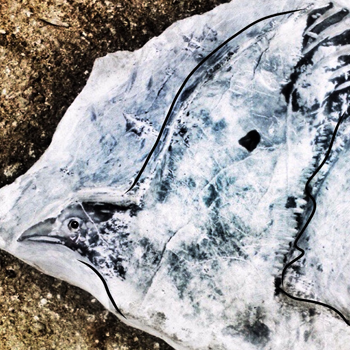
Posh Name: Corvus corax
Diet: Ravens are omnivores. They eat almost anything, including berries and small animals which they hunt, but their favourite food is carrion; meat that has already been killed and left behind by something else! That’s one of the reasons why ravens are thought to be scary animals; they are often near when something has died!
Habitat: Ravens are common in many different countries, across Europe and America for a start. They can live in cities, forests, farms, deserts, by the sea – everywhere! They have even been seen near the top of Mount Everest!
Lifespan: In the wild ravens usually live to be 10-15 years old, but some ravens in the Tower of London have lived to be 44 and one pet raven was recorded to live to be 80 years old!
Size/Weight: Ravens bodies are usually 24 to 26 inches long, with a wingspan of 3.8 to 4.7 feet. That’s about the size of an average ten year old! Ravens usually weigh around 1.3kg – a lot less than an average ten year old!
Home: Ravens live in large nests the shape of a deep bowl. The outside is made of sticks and twigs, with an inner layer of roots and mud, and then padded with soft material like deer fur.
Mating and Courtship: Ravens are very romantic birds and will start courting when they are very young, taking two or three years to properly pair up and have babies. Their courting rituals include showing off by doing acrobatics in the sky, proving their cleverness by using tools and playing mind games with each other and showing that they are good at finding food. Once ravens find their mate they will build a nest and live together for life.
Babies: Ravens have 3-7 babies each year. The female will lay a clutch of blue-green eggs with brown blotches between February and May. She sits on the eggs for three weeks before they hatch. Then the mother and the father take it in turns to look after the chicks and go hunting. Chicks fledge (grow all their feathers) at 35-42 days old and start to learn to fly, but they stay with their parents until at least six months old. Raven families are very close and the young will sometimes stay with their parents for years, or find territories of their own nearby.
Defining Features: Ravens are big black birds with glossy feathers and long, sharp, slightly curved beaks. They look very like crows but are bigger and usually live alone or with their families. Ravens have lived near humans for thousands of years and have always been popular in mythology as tricksters. A group of ravens is called either an unkindness or a conspiracy, depending on what they are doing. They are called an unkindness when they pick on other birds, but a conspiracy when they hang around in groups with their tricksy smiles, looking down on you as if they are plotting something!
Peculiar Behaviour: Ravens can be very playful and like to dance in the air, performing stunning aerial displays, like acrobats at a circus! They plummet and drop and twirl, sometimes to attract a mate, but also just for fun. They also play games with each other, involving passing stones; they might drop them in the air for another to catch or play chase!
Weaponry: Ravens are big birds with sharp beaks and talons, but their best weapon is their cunning. They are the cleverest birds by far, playing tricks on other birds and people! Ravens are thought to be the only animals other than ants, bees and human beings who can communicate to each other things that are far away or even in the past. There is a very old legend that the ravens of the Tower of London guard the tower, and if they were to leave, the fortress and the kingdom of Britain would fall.
Vulnerability: Ravens are such big, strong, cunning birds that very little threatens them. In some countries they have been hunted as pests, and occasionally they are hit by cars when feeding on road kill, but all in all there is very little that can intimidate the cunning old raven!

